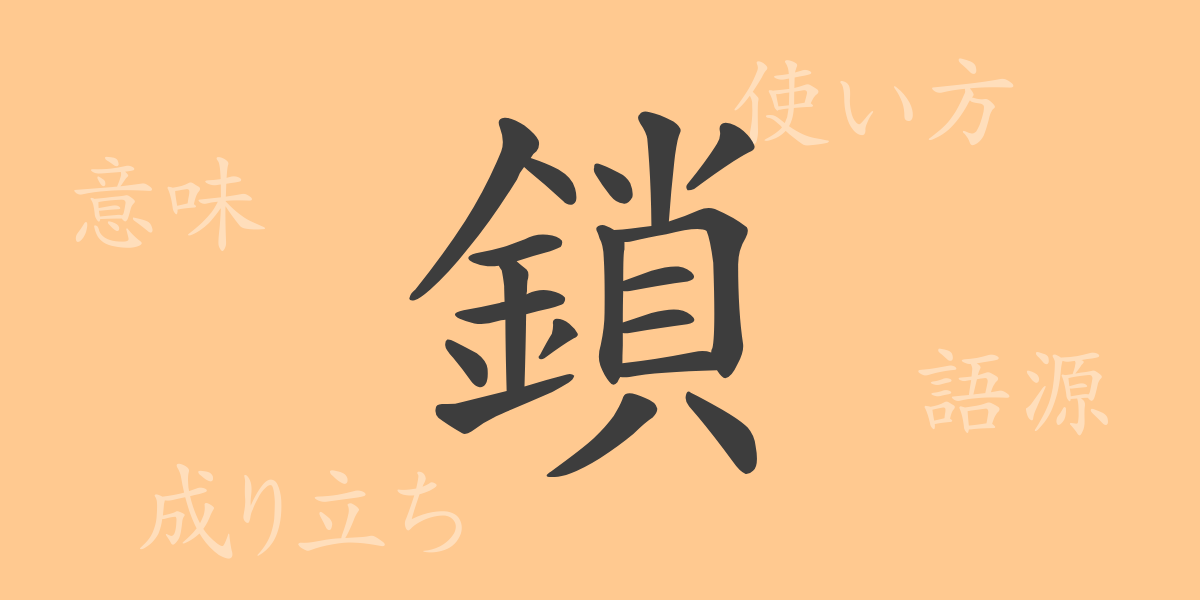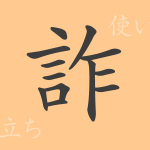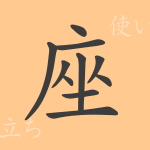Chains are not just a series of metal links; they are deeply rooted in culture, history, and our language. In this article, we delve into the profound world of the common-use kanji “鎖” (kusari). From its etymology to its meanings and usages, as well as idioms and phrases that incorporate chains, we explore the various aspects of “鎖” (kusari). Let’s embark on a journey to reconsider how this kanji, which we casually use in daily life, is intricately connected to our lives.
Etymology of 鎖 (kusari)
The etymology of “鎖” (kusari) dates back to ancient China. Originally, the character “鍊” (ren) was used, referring to the process of melting metal to extract pure substances. This “鍊” (ren) evolved into “鎖” (kusari), meaning a tool for linking metals together. In Japan, “鎖” (kusari) has long been used to bind or confine objects. Over time, its uses have diversified, and in modern times, it is used metaphorically as well.
Meanings and Usages of 鎖 (kusari)
“鎖” (kusari) is most commonly known as a term referring to a series of connected metal rings. However, its usage extends beyond the literal meaning to metaphorical expressions. For instance, something that binds a person’s heart or actions can be described as a “心の鎖” (kokoro no kusari, chain of the heart). It can also refer to social constraints or obstacles, as in “社会の鎖” (shakai no kusari, chain of society). In this way, “鎖” (kusari) is used in various aspects of our lives, from physical objects to psychological barriers.
Reading, Stroke Count, and Radical of 鎖 (kusari)
The kanji “鎖” (kusari) reflects its richness in meaning and form in its readings and structure.
- Reading: In the on’yomi reading, it is read as “サ” (sa), and in the kun’yomi reading, it is read as “くさり” (kusari).
- Stroke count: It has a total of 18 strokes.
- Radical: The radical is 金 (kanehen), meaning metal.
Idioms, Phrases, and Proverbs Using 鎖 (kusari) and Their Meanings
There are many idioms, phrases, and proverbs that include “鎖” (kusari), each with its unique meaning. For example, “鎖国” (sakoku) refers to a country closing itself off to limit diplomacy and trade, and “鎖骨” (sakotsu) refers to the collarbone connecting the shoulder and chest. In idioms, “足かせをはめる” (ashikase o hameru) means to restrict freedom, and “心の鎖を解く” (kokoro no kusari o toku) means to be freed from mental constraints. These expressions utilize the essential characteristics of chains, “connecting” and “binding.”
Conclusion on 鎖 (kusari)
Through this article, you may have understood that the kanji “鎖” (kusari) goes beyond being a mere physical tool, deeply ingraining itself in our language as a cultural and psychological concept. While it can bind, it also functions as a connecting force at times. In our language, “鎖” (kusari) is multifaceted, symbolizing the richness of the Japanese language. Just as a physical chain binds something, the kanji “鎖” (kusari) strongly connects our thoughts and expressions.

























